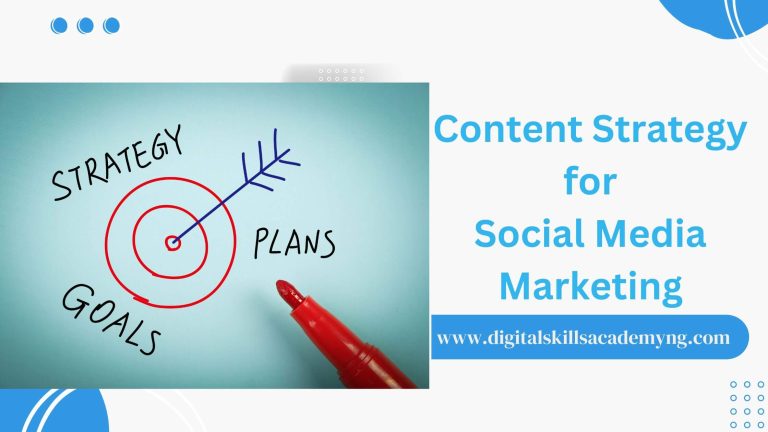What is cold email marketing and how to implement it? In the digital age, email marketing remains one of the most effective channels for reaching potential customers and growing a brand. While many are familiar with traditional email marketing, cold email marketing is a nuanced strategy that can yield significant results when executed correctly. This guide will delve into the intricacies of cold email marketing, how to utilize it effectively, and the strategies to grow your brand through email marketing.
What is Cold Email Marketing?
Table of Contents
Cold email marketing involves sending unsolicited emails to potential customers or clients who have no prior relationship with you. Unlike spam, cold emails are highly targeted, personalized, and crafted to establish a connection rather than sell a product. The goal is to initiate a conversation that could lead to a business relationship.
Key Characteristics of Cold Email Marketing
Targeted Outreach:
Cold emails are sent to a specific, well-researched audience.
Personalization:
Each email is customized to address the recipient’s needs, preferences, and pain points.
Permission-Based:
While unsolicited, cold emails should comply with regulations like the CAN-SPAM Act to ensure they are not considered spam.
Relationship Building:
The primary focus is building relationships rather than immediate sales.
How to Utilize Cold Email Marketing
Successfully utilizing cold email marketing requires a structured approach. Here are the essential steps to make your cold email campaigns effective:
Define Your Target Audience
I think the success of your cold email campaign hinges on identifying and understanding your target audience. Create detailed buyer personas that include demographics, job titles, industries, and pain points. Use tools like LinkedIn and industry-specific databases to gather information about potential leads.
Build a Quality Email List
Avoid purchasing email lists as they often contain outdated or irrelevant contacts. Instead, build your list through:
- Networking: Attend industry events and collect business cards.
- Online Research: Use LinkedIn and other social media platforms to identify potential contacts.
- Website Visitors: Implement tools to capture the emails of visitors to your website.
Craft a Compelling Subject Line
The subject line is the first thing recipients see, and it determines whether your email will be opened. Make it:
- Personalized: Use the recipient’s name or reference something specific to them.
- Intriguing: Spark curiosity without being misleading.
- Concise: Keep it short and to the point.
Write a Persuasive Email Body
The body of your email should be engaging and relevant:
- Introduction: Introduce yourself and explain why you are reaching out.
- Value Proposition: Clearly state what value you offer and how it addresses the recipient’s pain points.
- Call to Action (CTA): End with a clear and simple CTA, whether scheduling a call, downloading a resource, or visiting your website.
Follow Up Strategically
Following up is crucial in cold email marketing. Plan a series of follow-up emails that:
- Add Value: Provide additional information or resources.
- Stay Relevant: Reference previous emails and maintain the context.
- Respect Boundaries: Space out follow-ups appropriately and know when to stop if there’s no response.
Email Marketing Strategies
To maximize the effectiveness of your email marketing efforts, consider implementing the following strategies:
Segmentation
Segment your email list based on various criteria such as demographics, behavior, and engagement levels. This allows for more targeted and personalized communication, increasing the likelihood of engagement.
Personalization
Beyond using the recipient’s name, personalization can include tailored content based on past interactions, preferences, and needs. Personalized emails have higher open and click-through rates.
A/B Testing
Experiment with different elements of your emails (subject lines, email copy, CTAs) to determine what works best. A/B testing helps refine your approach and improve overall campaign performance.
Automation
Utilize email marketing automation tools to streamline your campaigns. Automated workflows can nurture leads through personalized content and timely follow-ups, saving time and improving efficiency.
Analytics and Optimization
Regularly analyze the performance of your email campaigns using metrics such as open rates, click-through rates, conversion rates, and bounce rates. Use these insights to optimize your future campaigns.
Compliance
Ensure that your emails comply with regulations such as the CAN-SPAM Act and GDPR. This includes providing an easy way for recipients to unsubscribe and respecting their privacy.
How to Grow a Brand Using Email Marketing
Email marketing can be a powerful tool for brand growth. Here’s how to leverage it to build and enhance your brand:
Establish Authority and Trust
Share valuable, informative content that positions your brand as an authority in your industry. This can include:
- Educational Articles: Provide insights and knowledge relevant to your audience.
- Case Studies: Showcase success stories and how your product or service solved specific problems.
- Expert Opinions: Share your take on industry trends and developments.
Foster Engagement and Loyalty
Engage your audience with content that resonates with them and keeps them coming back:
- Newsletters: Regular updates about your brand, products, and industry news.
- Exclusive Offers: Special discounts or early access to new products for subscribers.
- Surveys and Feedback: Involve your audience by seeking their opinions and feedback.
Drive Traffic and Conversions
Use email marketing to drive traffic to your website and convert leads into customers:
- Promotional Emails: Highlight new products, special offers, and sales events.
- Content Upgrades: Offer additional resources or bonuses in exchange for website visits.
- Event Invitations: Invite your audience to webinars, live events, or product launches.
Strengthen Customer Relationships
Nurture your existing customers to build long-term relationships:
- Onboarding Series: Welcome new customers with a series of emails that help them get started with your product or service.
- Customer Success Stories: Share testimonials and success stories from other customers.
- Re-Engagement Campaigns: Reach out to inactive subscribers with tailored content to bring them back.
Build a Community
Create a sense of community among your subscribers:
- User-Generated Content: Encourage customers to share their experiences and feature them in your emails.
- Social Media Integration: Promote your social media channels and encourage subscribers to join the conversation.
- Referral Programs: Incentivize your existing customers to refer new ones by offering rewards.
Conclusion
Cold email marketing, when done correctly, is a powerful tool to reach new potential customers and grow your brand. By understanding your audience, crafting personalized and engaging emails, and implementing effective strategies, you can build meaningful relationships and drive significant business growth. Email marketing, in general, remains a cornerstone of digital marketing strategies, offering a direct and personal way to connect with your audience, establish your brand’s authority, and foster long-term loyalty. By continuously optimizing your approach and staying compliant with regulations, you can maximize the benefits of email marketing and achieve sustained brand growth.
Remember to share and follow for more digital marketing content.




